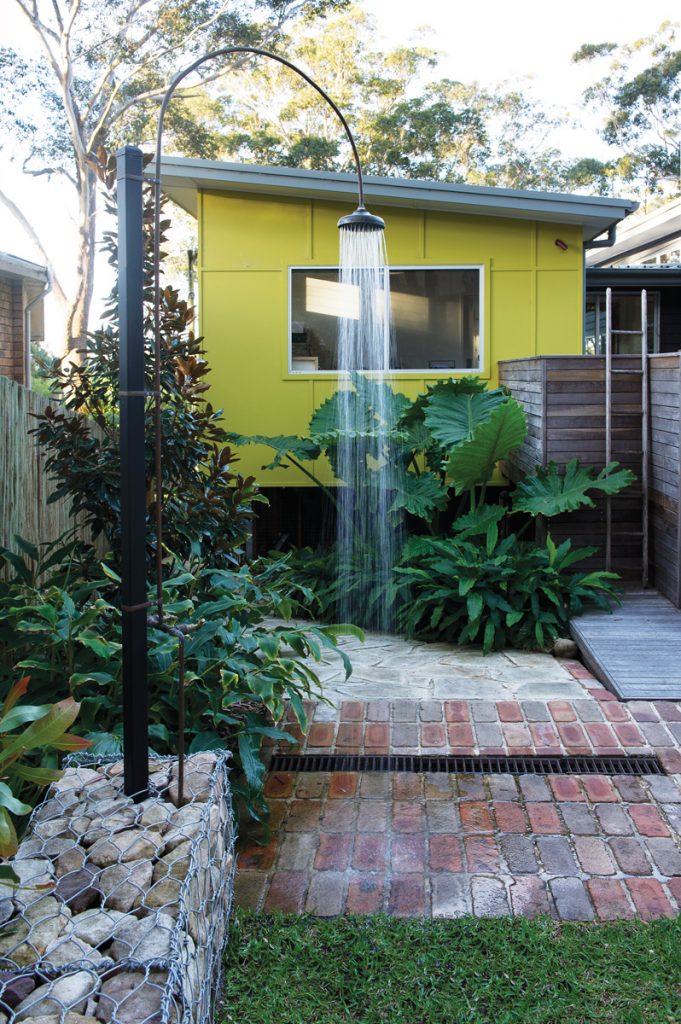Evolving Beauty
This lush seaside garden is thriving after only a year despite its dry climate and starting point of sandy soil. The key, as ever, was having a great foundation …
It’s a sad reflection on our time-poor society that many clients ask for a “low maintenance” garden when they brief a landscape designer. James Headland, of Pangkarra, dreads that kind of brief because so often it means more hard surfaces and fewer plants. So he was understandably excited when one of the owners of this breezy new house on the Central Coast of New South Wales expressed not only an interest in gardening, but a desire for a plant palette replete with native species.
“Leonie is a gardener, so she wasn’t scared of the garden containing lots of plants,” says James. “She is also very ‘green’ in her outlook and loves natives, so that was part of her brief. She wanted the garden to be water-wise and to invite meandering.”
James advised against putting in an irrigation system, concentrating instead on good plant selection to cope with the conditions, and building up the organic content in the sandy soil to improve its water-holding capacity. Just a year after the garden was created, the growth rates of the plants show just how beneficial such a solid start will always be. In the front garden kangaroo paw “Big Red” are already at shoulder height, clumps of native grasses fill in the ground plane, crinum lilies jostle for space, and shell ginger has formed a lush screen along one boundary.
“All of these plants grow quickly,” says James, surveying the textured front garden which spreads across the verge to the edge of the road. “But you have to wait for the larger things, like the trees, and that’s what’s lovely about gardening – watching the structure develop over time and the garden evolve.”
While the majority of the garden’s plants are native species, there are also exotics suited to dry climates and sandy soils, including a surprising trio of rich green Hollywood junipers, which corkscrew spirally as they grow. “I love their habit,” admits James. “The front garden is quite loose, so the vertical form of the three junipers adds some necessary structure. Plus I do like to mix natives with exotics.”
The irregular, north-facing block is slightly narrower at the back boundary and fans out as it slopes gently down to the road. Two mature trees – a blackbutt and an elegant angophora, both of which are endemic to the area – dominate the rear garden. Curving gabion walls of caged stones add an organic quality to the plan and lead the eye around the upper lawn terrace. It is surrounded by deep garden beds filled with groups of screening trees like native lilypillies and lemon myrtle, and exotic plants including fast-growing and drought-tolerant silver helichrysum, bird-attracting calliandra and, at ground level, stunning Mexican lilies (Beschorneria yuccoides ), which produce eye-catching stalks of creamy-green flowers with bright pink bracts in spring.
In the centre of the rear garden, wide steps of river pebble, with chevron-shaped rusty-red risers of corten metal, link the upper lawn with the lower paved terraces. To the east of the steps, the sunniest corner is reserved for a vegetable and herb garden, illuminated at night by a lamppost created by using an old metal shade the client loved.
Closer to the house terraces of sandstone crazy paving ringed with low, rendered masonry walls that provide casual seating invite the visitor to sit and take in the garden at close inspection. “I love to be embraced by garden spaces,” James says. “For me being closer to the ground enhances that feeling.”
Behind one of the low rendered walls a row of dwarf Indian hawthorn shrubs fringes the deck, while on the other side of the steps leading to the deck is a bed of cardamom shaded by the huge and strongly ribbed, wavy leaves of Alocasia portadora .
“There are lots of little microclimates in this garden because of its orientation,” says James, “so I had the ability to create a sunny vegetable garden on one side, and something quite tropical and shaded in this corner. The cardamom gives off a lovely scent as you brush past it in summer.”
Luckily in the course of building the new house – whichreplaced an old seaside cottage where one of the owners had spent her childhood summer holidays – only one blackbutt had to be removed. The timber is now being milled and will be used to construct an L-shaped seat James has designed for the back corner of the lawn terrace. As if any more encouragement were needed, the seat will lure visitors up into the garden to sit and admire its structure and diverse range of plants.
Far from being high maintenance, because of thorough soil preparation, a carefully considered palette of site-specific species, and a thick layer of regularly applied mulch, this garden will long continue to thrive and enhance the lives of all who enter it.












